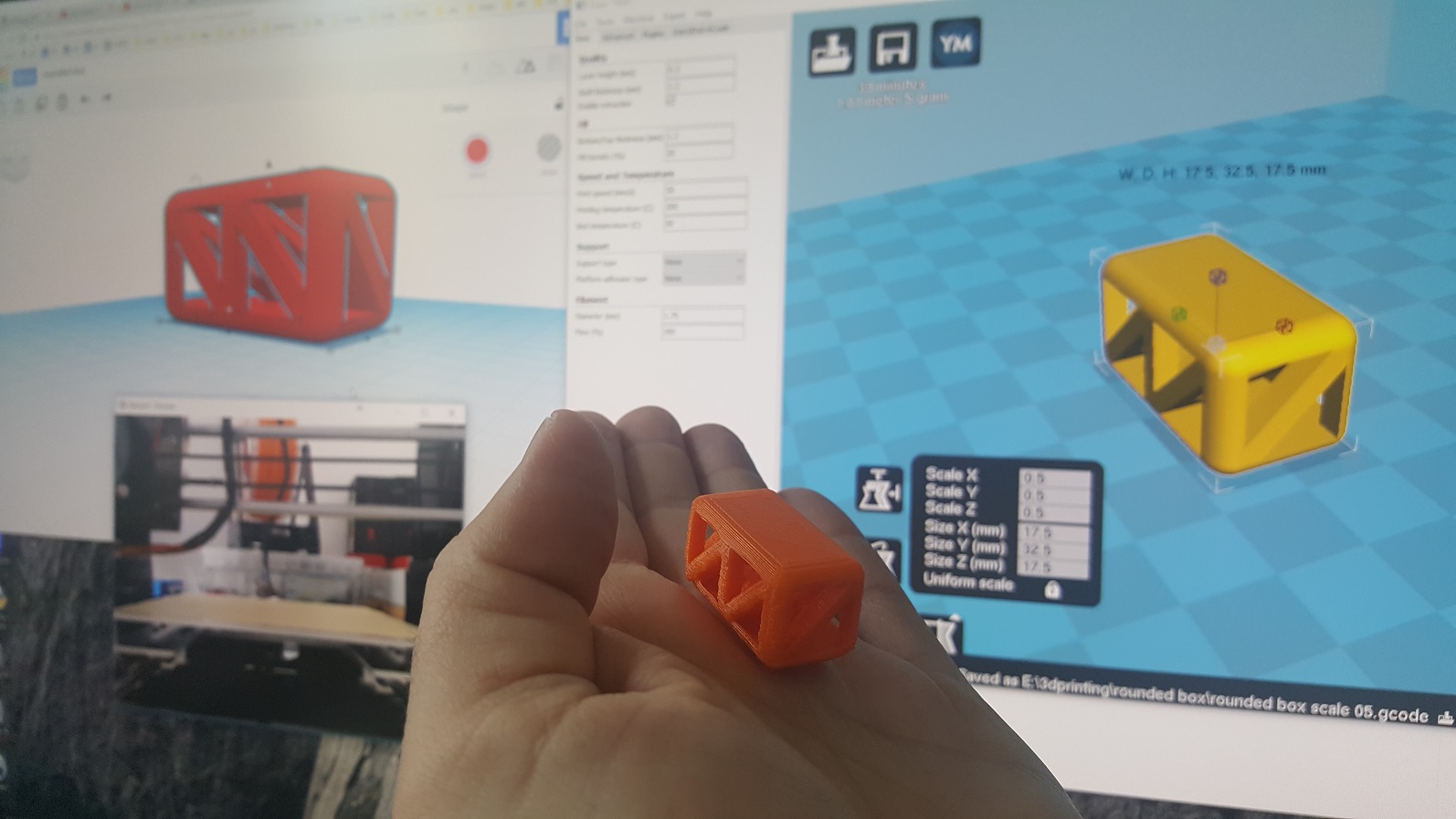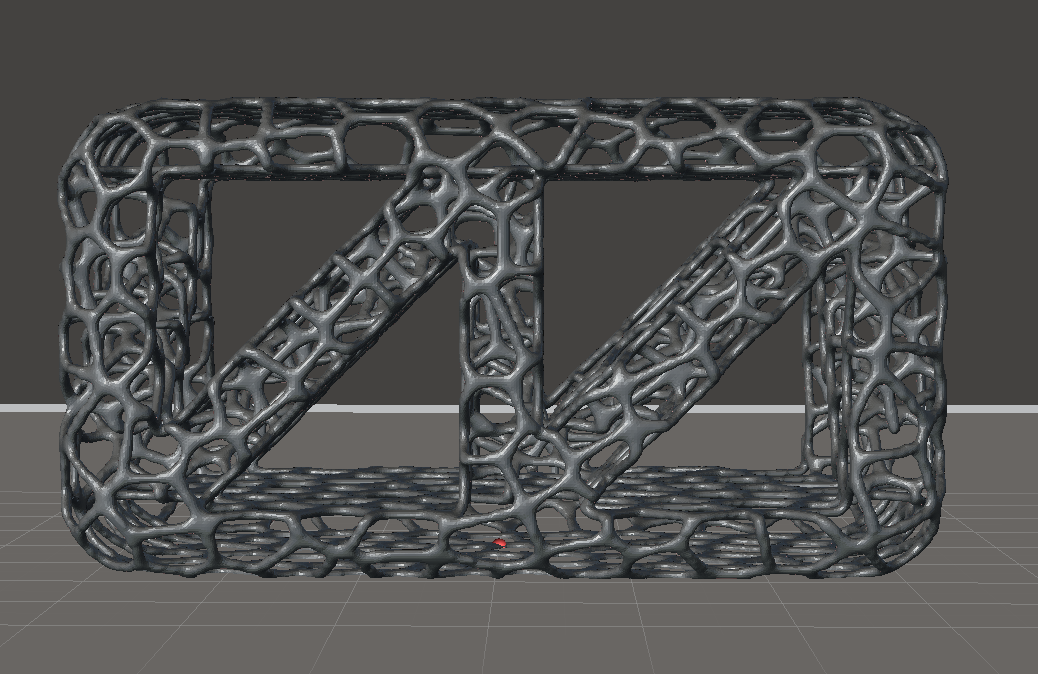I recently bought the cheapest a Prusa i3 clone on the planet, an Anet A8 at gearbest. Lovely to build and certainly great for an electronics hobbyist / maker. I never would buy a 600 or even 2000€ printer today, since I don’t think to have many usage scenarios.
But there was always one dream: to print “bones” for my walking robots to make them lighter and more “bionic”. So one of the first things I designed on Tinkercad was this structure:
I’ve been searching for a while to make structures more “bone”-like, i.e. some kind of organic or cell-like holes into them. That’s not too easy.
One tutorial I found is working with Autodesk Meshmixer. a software that is really nice to work with 3d models and view them. The tutorial leads to such structures:

The problem is that this depends on the amount of points given in the 3d model itself and tessalating them is cumbersome imho.
Another software I found is the Voronoization Online service which is EXACTLY what I want (upload STL, set parameters, download STL, bang!). The point is that you don’t care about the points of which your model consists:
And here’s the video comparing the solid version and the Voronoy version:
This 6x3x3cm structure has a weight of five grams, it’s 20% infill, 3×1.5×1.5 solid sibling has six grams (but of course the solid one is MUCH sturdier).
I’ll now get into testing these parameters and understanding them in the context of 3d-printability. Exciting!

